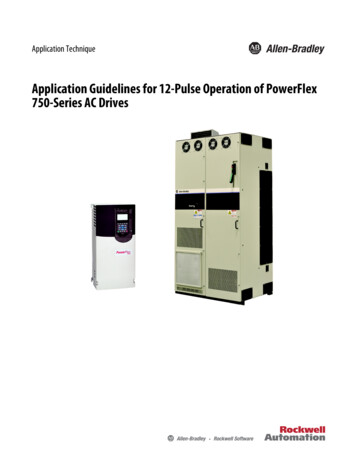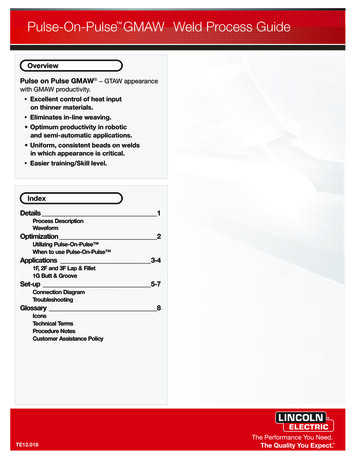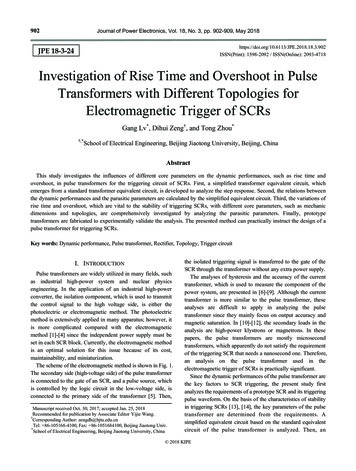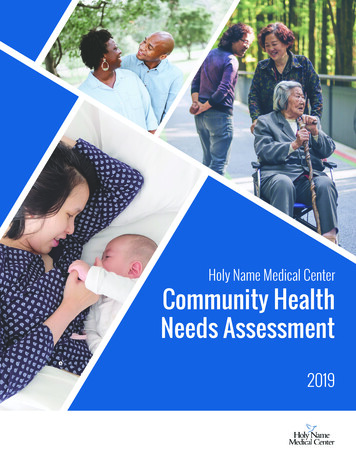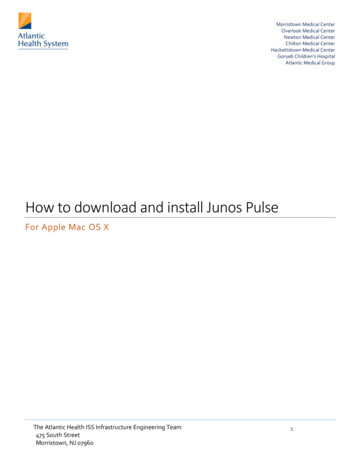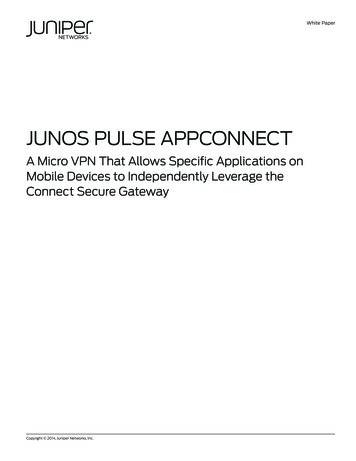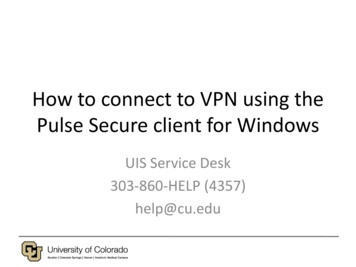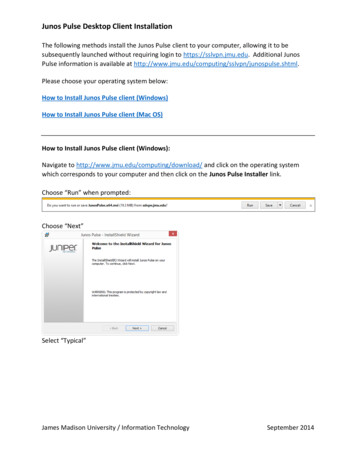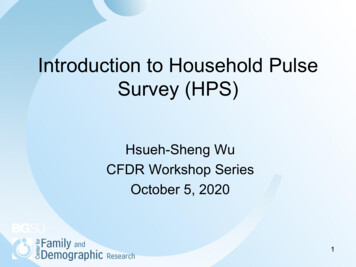
Transcription
Introduction to Household PulseSurvey (HPS)Hsueh-Sheng WuCFDR Workshop SeriesOctober 5, 20201
Introduction to HPS Study design of HPS Navigate HPS website––––OutlineHousehold Pulse Data ToolHousehold Pulse Survey Public Use File (PUF)Household Pulse Survey Technical DocumentationMore background for Household Pulse Survey The HPS data on the CFDR server Stata codes for:– Analyzing a single-week HPS data– Analyzing multiple-week HPS data Conclusions2
Introduction to HPS HPS was designed to understand the individuals’ experiences of COVID-19 and providetimely information essential for governmental and non-governmental responses tobusiness curtailment and closures, stay-at-home orders, school closures, changes inconsumer patterns and the availability of consumer goods, and other abrupt andsignificant changes to American life. In partnership with Bureau of Labor Statistics, National Center for Health Statistics,Department of Agriculture Economic Research Service, National Center for EducationStatistics, Department of Housing and Urban Development, Social SecurityAdministration, and Bureau of Transportation Statistics, the U. S. Census Bureau,developed the Household Pulse Survey (HPS). HPS has two phases: Phase 1 covered the time period from April 23 to July 21 andphase 2 will cover the time period from August 19 to October 26. Phase 1 of HPS includes 12 weekly surveys to collect data on individuals’ experiencesin terms of employment status, food security, housing, physical and mental health,access to health care and educational disruption. Phase 2 of HPS include 5 bi-weekly surveys to collected data on domains previouslyexamined in phase 1 as well as new domains such as application and receipt ofbenefits, spending patterns, availability of financial resources, post-secondary educationdisruptions, capacity to telework, and travel practices.3
Study Design The HPS is a on-line survey, collected via the Qualtrics survey platform The sampling frame of the HPS was created by combining Census Bureau’sMaster Address File (MAF) and email and mobile telephone numbers from theCensus Bureau Contact Frame. Once a household was selected and arespondent within the household completed an interview, that household remainsin sample for up to two additional weekly survey periods. If respondents have been selected to participate in the Household Pulse Survey,they will receive an email from COVID.survey@census.gov or a text message from39242* (message and data rates may apply) with a link to complete the survey. IfCensus Bureau has not received a response from the respondents, up to 3 followup reminders will be attempted. The length of HPS surveys was around 20 minutes The HPS is designed to produce estimate at three geographic levels: (1) 15 largestMetropolitan Statistical Areas, (2) each of the 50 states plus the District ofColumbia, and (3) the national level.4
Study DesignTable 1. Information about the first 13 weeks of HPS DataPhase #Week #Time PeriodThe Size ofTargetPopulation1Week 14/23-5/5249,170,9161Week 25/7/-5/121Week 31Sample SizeNumber ofRespondentsResponse RateNumber of eek 45/21-5/26249,170,9161,159,411101,2159%821Week 55/28-6/2249,170,9161,070,820105,06610%821Week 66/4-6/9249,170,916979,23683,3029%841Week 76/11-6/16249,170,9161,172,90073,4726%1051Week 86/18-6/23249,170,9161,309,591108,0628%1051Week 96/25-6/30249,170,9161,061,04798,6639%1051Week 107/2-7/7249,170,9161,016,12790,7679%1051Week 117/9-7/14249,170,9161,095,18791,6058%1051Week 127/16-7/21249,170,9161,122,70286,7928%1052Week 138/19-8/31249,170,9161,032,959109,05111%1885
Navigating the HPS website The HPS website -pulsesurvey.html) Household Pulse Data Tool The Interactive Graphic Tool for Phase 2 ) The interactive Excel Table for Phase 1 lsx) Household Pulse Survey Public Use File ehold-pulse-survey/datasets.html) Household Pulse Survey Technical html) More background for Household Pulse ta-products/household-pulsesurvey.html)6
The HPS data on the CFDR Server The Location of the HPs data on the CFDR Server:7
HPS data8
Sample Stata codes: The attached Stata do and log files file shows:– How to analyzing a single-week HPS data– How to analyzing multiple-week HPS data9
Conclusions The HPS provides timely information about the social and economic impact of Covid-19 on theindivdidual’s lives via its weekly or bi-weekly data collection and quick release of data for publicuseThe HPs used a national representative sample and allows analyses to be conducted at thelevel of 15largest Metropolitan Statistical Areas, the state level, and the national level.The phase 1 HPS has only replicate personal weights, and the phase 2 HPS has both personaland household replicates weights. Thus, when using the phase 2 HPS data, researchers canuse the household as the unit of analysis.The samples do not overlap between phases 1 and 2 surveysThe wordings of same variables may change across surveys at different weeks, which mayinfluence the estimate of variables across these surveys.The response rates of HPS are not very high and may generate unknown estimation bias.Only limited editing and imputation was done to the HPS data. For example, for the phase 1data, only birth year, sex, race, Hispanic origin, educational attainment, number of people,number of children, and the number of adults are edited. Therefore, there may be someinconsistencies or even errors in other HPS variables.The estimates from HPS are not entirely comparable with other national data sets (e.g., ACS orCPS) because differences in the sample size, response rates, data collection processes, andediting procedures.Because the HPS was designed to quickly provide timely information about the impact ofCovid-19, Census Bureau corrects data problems as these problems emerge. Thus, it is veryimportant to follow up on all the source and accuracy statements of the HPS10
Phase 2 of HPS include 5 bi -weekly surveys to collected data on domains previously examined in phase 1 as well as new domains such as application and receipt of . (MAF) and email and mobile telephone numbers from the Census Bureau Contact Frame. Once a household was selected and a respondent within the household completed an interview .

